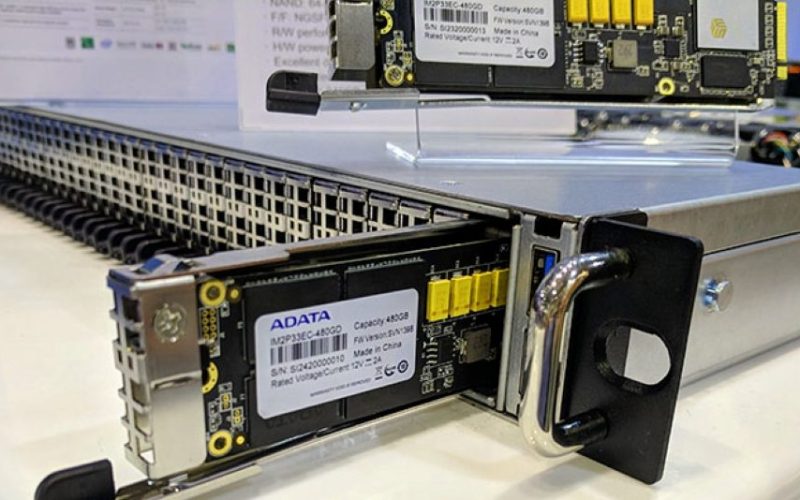Ever felt like your computer was moving slower than a snail on a lazy Sunday afternoon? We’ve all been there—click, wait… still waiting. Whether you’re gaming, working, editing videos, or just trying to browse the web without pulling your hair out, a sluggish system can be a real mood killer.But guess what? There’s a game-changing upgrade that can breathe new life into your old setup or give your new build a serious edge. Enter the solid state drive—better known to its fans as the SSD.Yup, SSDs have taken the tech world by storm—and for darn good reason. They’re faster, more reliable, and way more efficient than their clunky, spinning hard drive cousins. In this article, we’re diving headfirst into how these storage marvels kick performance into high gear. We’ll chat about the science behind the speed, how they stack up against traditional hard drives, and what you need to look for when choosing the right one for your needs.
SSDs vs. HDDs: The Showdown
Alright, let’s start with a little face-off. You’ve got two main types of storage drives on the block: HDDs (Hard Disk Drives) and SSDs (Solid State Drives). One’s old-school, spinning like a record player. The other? Sleek, silent, and lightning fast.
Traditional HDDs – The Good, the Bad, and the Outdated
HDDs have been around since, well, forever in tech years. They store data on spinning magnetic disks. A mechanical arm moves around to read and write data. It’s all very retro and, frankly, kind of clunky.
Cons of HDDs:
- Slower read/write speeds
- More susceptible to physical damage
- Heavier and noisier
- Longer boot and load times
They’re like that trusty old truck in your grandpa’s garage—reliable in its day, but you wouldn’t take it on the freeway without a backup plan.
Solid State Drives – Fast, Fierce, and Flashy
SSDs don’t have any moving parts. Instead, they use flash memory to store your data. That means everything happens at the speed of light—or pretty darn close.
Benefits of SSDs:
- Blazing-fast boot times
- Quick app launches and file transfers
- Better durability (no moving parts = fewer failures)
- Less power consumption (hello, longer laptop battery life!)
- Silent operation
Talk about a night-and-day difference. It’s like upgrading from a flip phone to the latest smartphone—you’ll wonder why you waited so long.
Why SSDs Supercharge Your System
Okay, so we’ve established that SSDs are fast—but how, exactly, do they make such a jaw-dropping impact on performance? Let’s peel back the curtain.
1. Lightning-Fast Boot Times
First impressions matter, and your system’s boot time is its handshake. An SSD boots up your OS in a flash—literally seconds, compared to a minute or more with an HDD. That means less thumb-twiddling and more doing.
2. App Launches That Don’t Drag
Tired of twiddling your thumbs while Photoshop or your favorite game takes forever to load? SSDs load applications significantly faster, which adds up to a smoother workflow and a lot less waiting around.
3. Snappy File Transfers
Transferring big files used to be like watching paint dry. With an SSD, it’s more like zipping through a fast lane. Moving gigabytes of data takes seconds, not minutes.
4. Smoother Multitasking
If you’re the kind of person who has a dozen browser tabs, a video rendering in the background, and music playing all at once—first off, respect. Second, SSDs can handle the pressure. They let you juggle tasks without the dreaded freeze-ups.
Real-World Performance Gains: What You’ll Notice
Now we’re cookin’. Let’s talk about the real, tangible boosts you’ll notice when you swap out that dusty HDD for a sleek SSD.
- Faster Startup: Boot your machine in 10–15 seconds instead of a sluggish 1–2 minutes.
- Better Gaming: Load times shrink dramatically in many modern games.
- Seamless Editing: Video and photo editing programs load faster and run smoother.
- Speedy Software Installation: Apps download and install without that annoying lag.
- Cooler Operation: SSDs generate less heat, helping your machine run cooler and quieter.
Oh, and here’s the kicker—once you’ve experienced these upgrades, there’s no going back. It’s like switching from dial-up to fiber-optic internet. Yeah, it’s that good.
Top Solid State Drives to Consider
Feeling ready to make the leap? Hold up—we’re not just throwing any old SSD into the mix. When you’re after speed, reliability, and value, you’ve gotta go for the top solid state drives. Here’s a breakdown of a few that consistently make techies grin.
1. Samsung 990 Pro
- PCIe Gen 4.0 NVMe SSD
- Blazing speeds up to 7,450 MB/s read
- Trusted reliability
- Perfect for gaming, content creation, and hardcore multitasking
2. Western Digital Black SN850X
- Designed with gamers in mind
- Heatsink option for better thermal control
- Speeds topping 7,300 MB/s
3. Crucial MX500
- More budget-friendly but still packs a punch
- Great SATA option with 560 MB/s read speed
- Ideal for upgrading older laptops or desktops
4. Kingston KC3000
- Another NVMe rocket ship
- Top-notch speeds for pros and enthusiasts alike
5. Sabrent Rocket 4 Plus
- Competitive pricing with next-gen performance
- Great option for creative professionals
Pro Tip: If you’re eyeing a cloud server SSD solution for hosting or business infrastructure, NVMe-based drives like the ones above offer unparalleled IOPS performance and data handling—making them a favorite in enterprise environments.
Final Thought
Ready to experience blazing-fast speed and rock-solid reliability? Whether you’re upgrading a single system or optimizing enterprise infrastructure, expert guidance and top-tier storage solutions can make all the difference. With pro-level support and performance-focused tools, you can finally unlock your system’s true potential—no fluff, no nonsense, just results. Cloud Ninjas LLC is your go-to source for SSD upgrades and cloud storage solutions that deliver. Don’t wait—make your move today!












